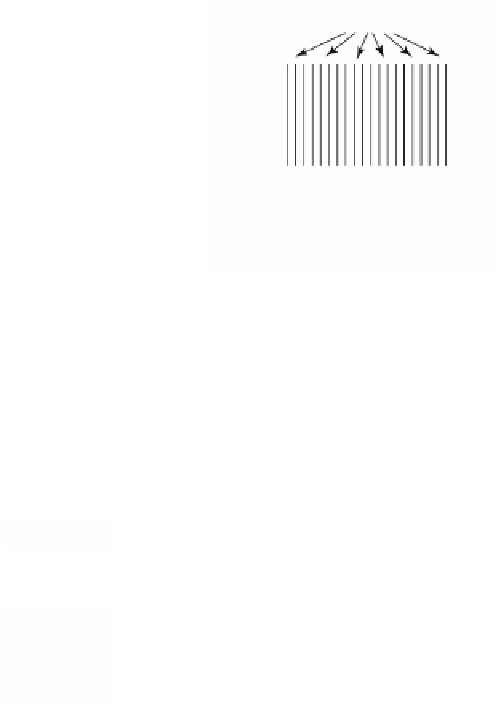Graphics Reference
In-Depth Information
Figure 7.24.
Basic bundle terminology.
fibers p
-1
(x)
≈
F
total space
Y
projection
p
base space
X
Next, we define a notion of equivalence of bundles over a space. We begin by defin-
ing general bundle maps. They should preserve the fibers (map fibers to fibers) since
that is the only structure present.
Definition.
A
bundle map
from a bundle (
Y
1
,p
1
) over a space
X
to a bundle (
Y
2
,p
2
)
over
X
is a map
f:
YY
Æ
1
2
with the property that
f
Y
ææ
Y
1
2
p
p
1
2
X
is a commutative diagram (p
1
= p
2
°
f). The bundle map f is called a
bundle isomorphism
and we say that the bundles (
Y
1
,p
1
) and (
Y
2
,p
2
) are
isomorphic
if f is a homeomorphism.
If (
Y
,p) = (
Y
1
,p
1
) = (
Y
2
,p
2
), then a bundle isomorphism is called a
bundle automorphism
of (
Y
,p).
Definition.
A bundle (
Y
,p) over a space
X
that is isomorphic to a product bundle is
called a
trivial bundle
. The bundle is called a
locally trivial bundle
if for every
x
Œ
X
there is an open neighborhood
U
of
x
in
X
such that (p
-1
(
U
),pΩp
-1
(
U
)) is isomorphic
to a trivial bundle over
U
.
If all locally trivial bundles were trivial bundles, there would be no point in intro-
ducing the concept of bundle. The next example describes a very simple nontrivial
bundle.
7.4.2.1. Example.
If we consider
P
n
as the quotient space of
S
n
where antipodal
points are identified and let p :
S
n
Æ
P
n
be the quotient map, then one can show that
(
S
n
,p) is a locally trivial bundle over
P
n
(Exercise 7.4.2.1). Every fiber is the discrete
space consisting of two points. Clearly, (
S
n
,p) is not a trivial bundle because
S
n
is con-
nected and the trivial bundle with fibers consisting of two points would not be.



